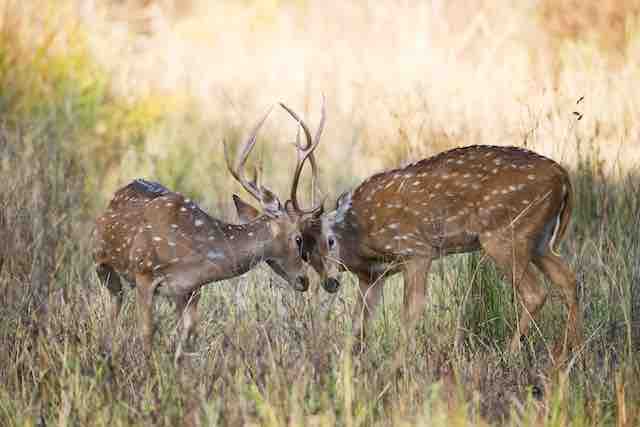In a disturbing turn of events, officials in Oklahoma have announced the discovery of a second ‘zombie deer’ in the year 2023. The occurrence of these so-called ‘zombie deer’ has raised alarm among experts in animal health and wildlife management. This article delves into the details of this unnerving phenomenon, shedding light on the underlying cause and the efforts being made to address it. Join us as we explore the troubling presence of chronic wasting disease (CWD) and its implications for Oklahoma’s wildlife.
Understanding the ‘Zombie Deer’ Phenomenon
The term ‘zombie deer’ has gained traction in recent years due to the spread of chronic wasting disease (CWD) among deer populations. CWD is a transmissible neurological disease that affects deer, elk, and moose. It earned its chilling nickname due to the symptoms it presents, including weight loss, listlessness, drooling, and a lack of fear towards humans. As the disease progresses, it leads to severe neurological deterioration, ultimately resulting in death.
CWD in Oklahoma
The recent discovery of a second ‘zombie deer’ in Oklahoma has raised concerns about the spread of CWD within the state. Officials are working diligently to monitor the situation and prevent further contamination. As CWD is highly contagious, it poses a significant threat to the state’s deer population and the ecological balance of its wildlife.
The Implications of CWD
Chronic wasting disease has severe implications not only for deer populations but also for the broader ecosystem. As infected deer often exhibit behavioral changes, such as disorientation and increased aggression, it can disrupt natural patterns of animal behavior. This disturbance can have a cascading effect, impacting predator-prey relationships, plant growth, and biodiversity.
Efforts in Wildlife Management
To combat the spread of CWD and protect Oklahoma’s wildlife, officials have implemented various measures. These include increased surveillance of deer populations, mandatory testing of harvested animals, and the establishment of restricted zones to prevent the movement of potentially infected deer. Additionally, public awareness campaigns have been launched to educate hunters and the general public about the disease and its implications.
Collaboration and Research
Addressing CWD requires a collaborative effort between government agencies, researchers, and the public. Scientists are conducting extensive research to understand the disease better and develop effective management strategies. By studying the patterns of CWD transmission and its impact on wildlife, they aim to mitigate its spread and safeguard the long-term health of deer populations.
Conclusion
The discovery of a second ‘zombie deer’ in Oklahoma serves as a reminder of the growing threat of chronic wasting disease. It emphasizes the importance of proactive measures in wildlife management to prevent further spread and protect the state’s precious ecosystem. By staying informed and participating in efforts to combat CWD, we can contribute to the preservation of Oklahoma’s wildlife and ensure a sustainable future for generations to come.












